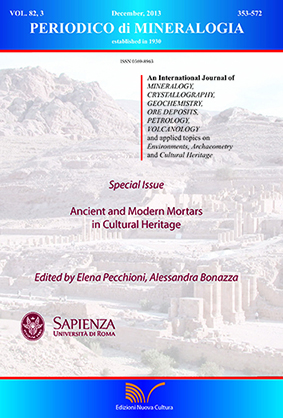Almost ten years of plasters residue analysis in Italy: activity areas and the function of structures
DOI:
https://doi.org/10.2451/2013PM0023Keywords:
Residue analysis, human activities, plasters, food, Roman, Medieval.Abstract
Plasters are porous materials that absorb the substances with which they come into contact.
When activities are carried out on floors, the substances used and produced by the activities
are poured onto them and absorbed. The chemical analysis of the residues preserved in
plastered archaeological floors can therefore provide information on the use of space and the
function of structures. In this paper we show a synthesis of the results of the analyses of
Roman and Medieval buildings with plastered floors found in Italy, which allowed to identify
the traces of different activities such as food production, preparation and consumption, as
well as toilet activities. Spot tests aimed at identifying the presence of phosphates, fatty acids
and protein residues have been used to analyse the plaster samples. The results were plotted
in a GIS environment and maps were generated to understand the distribution of the chemical
residues. Gas chromatography-mass spectrometry (GC-MS) has been carried out on specific
samples to better identify the organic residues.


